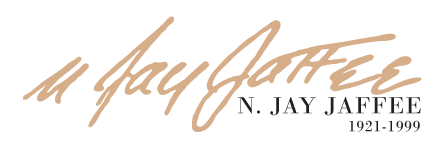In excerpts from a letter written in October 1998 to Julia Van Haaften, Curator of Photography at the New York Public Library, N. Jay Jaffee discussed some of his experiences and thoughts about black-and-white photography vs. color photography. During the late 1960s and early 1970s, without a darkroom to process black-and-white, the artist briefly turned to color slides as “the next best alternative.” However, his infatuation with color was short-lived.
N. Jay Jaffee donated 8 boxes of color slides (216 transparencies) to the New York Public Library, mostly of anti-Vietnam war demonstrations in New York and Washington, D.C. Others were of New York scenes. The New York Public Library also owns 150 N. Jay Jaffee photographs.
The [enclosed] transparencies were made during a time when I did not have a darkroom. It was somewhat a relief to photograph in color, allowing for a more carefree manner. I had just begun to work in the 35mm format.
The use of color was liberating. I had no obligations. I sent my film to be finished by Kodak. It was easy, No hard work in the darkroom. The transparencies came back neatly mounted, ready to be projected. I eventually realized (sadly) that the projected image was the end of the creative process. I was not interested in color prints. They would eventually fade. I did not have the desire to hustle the transparencies to picture agencies. That was not the purpose of what I was doing. What then was my purpose?
As a combat infantryman in the “big war,” I felt duped at its conclusion when, instead of world peace, spearheaded by the United Nations, another war, the “Cold War” took its place. It made a mockery of the “Four Freedoms” many of us thought would have been a worthwhile objective after the defeat of fascism. Then came the 60s and 70s. I was in my forties then—but I wanted to be part of the exciting times because of my basic beliefs, and my fierce objection to the needless killing of Americans and Vietnamese, and of the people in that beautiful country who were suffering needlessly. Perhaps that was my purpose. To feel part of the growing community who were also voicing their opposition to war.
Subsequently, I returned to back-and-white photography, after realizing it was more satisfying to make prints as part of a complete process where I could control my work from beginning to end. Longevity of my prints was assured in the way I processed my work. It also afforded me a better opportunity to expose my photography to a larger audience. I was also convinced that there were more limitations using color than black and white, especially when attempting to render reality. Natural color in photography has not yet been invented. Because of the middle tones in B&W, there is greater depth, sense of realism, and satisfying (sic) to look at, and with continued interest over the years.
Color, on the other had, has no middle tones. Colors butt one another. Striking to look at initially, the image loses its appeal when the first shock is over. There are no tones to hold one’s interest. (I could not wait to turn to the next month’s print, even when I hung color-printed calendars showing exquisite views of the Swiss Alps!)
© 2012 The N. Jay Jaffee Trust. All rights reserved. Do not use without permission. www.njayjaffee.com
